Creating Share Classes
Updating share classes is the first step in managing your securities and this must be done in prior to issuing shares.
This guide will demonstrate how to:
Create share classes; and
Update preferred stock details
Note: Please prepare the most recent version of your Formation/Incorporation Document, as well as any applicable term sheets when creating share classes and issuing new shares for accuracy.
Creating Share Classes
Navigate to: [Securities] → [Shares]
Please make sure to create share classes before you issue any shares.
Share class will include information on the type of shares (common, preferred) as well as detailed terms (such as liquidation preferences /redemption /conversion rights).
1. Select [Manage Share Classes] → [Create Share Class].
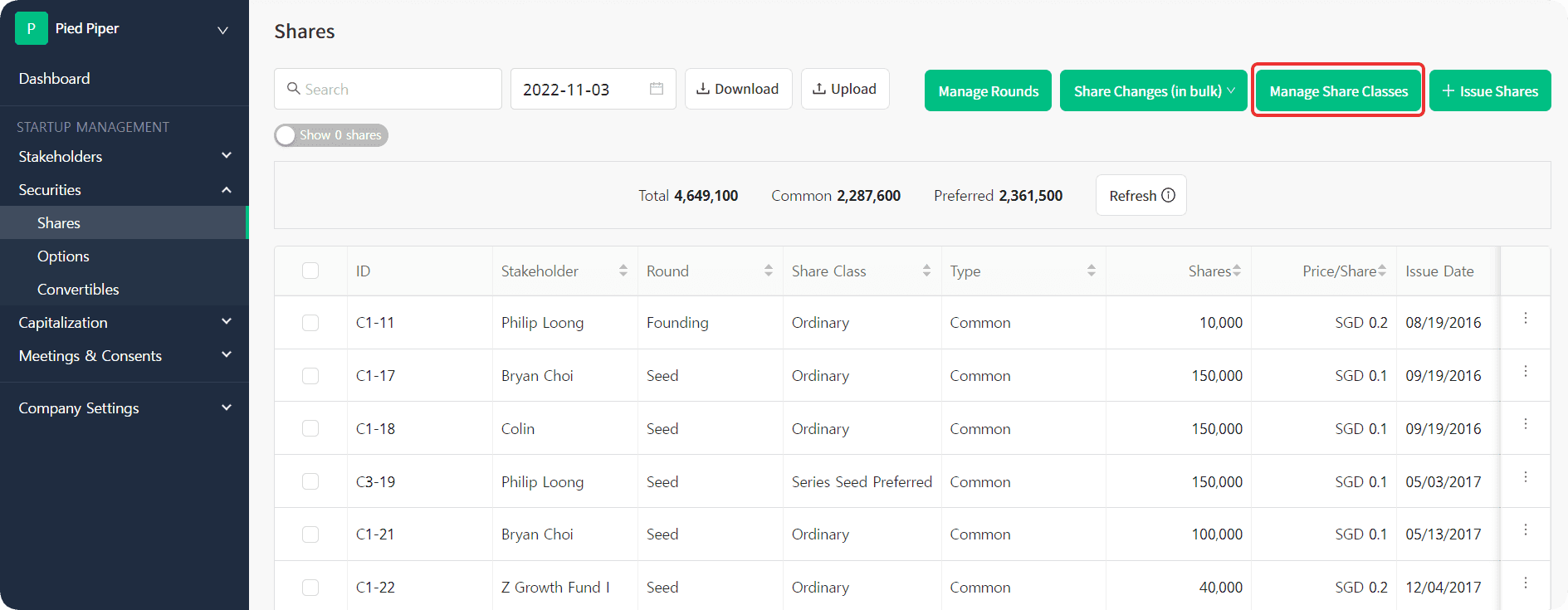
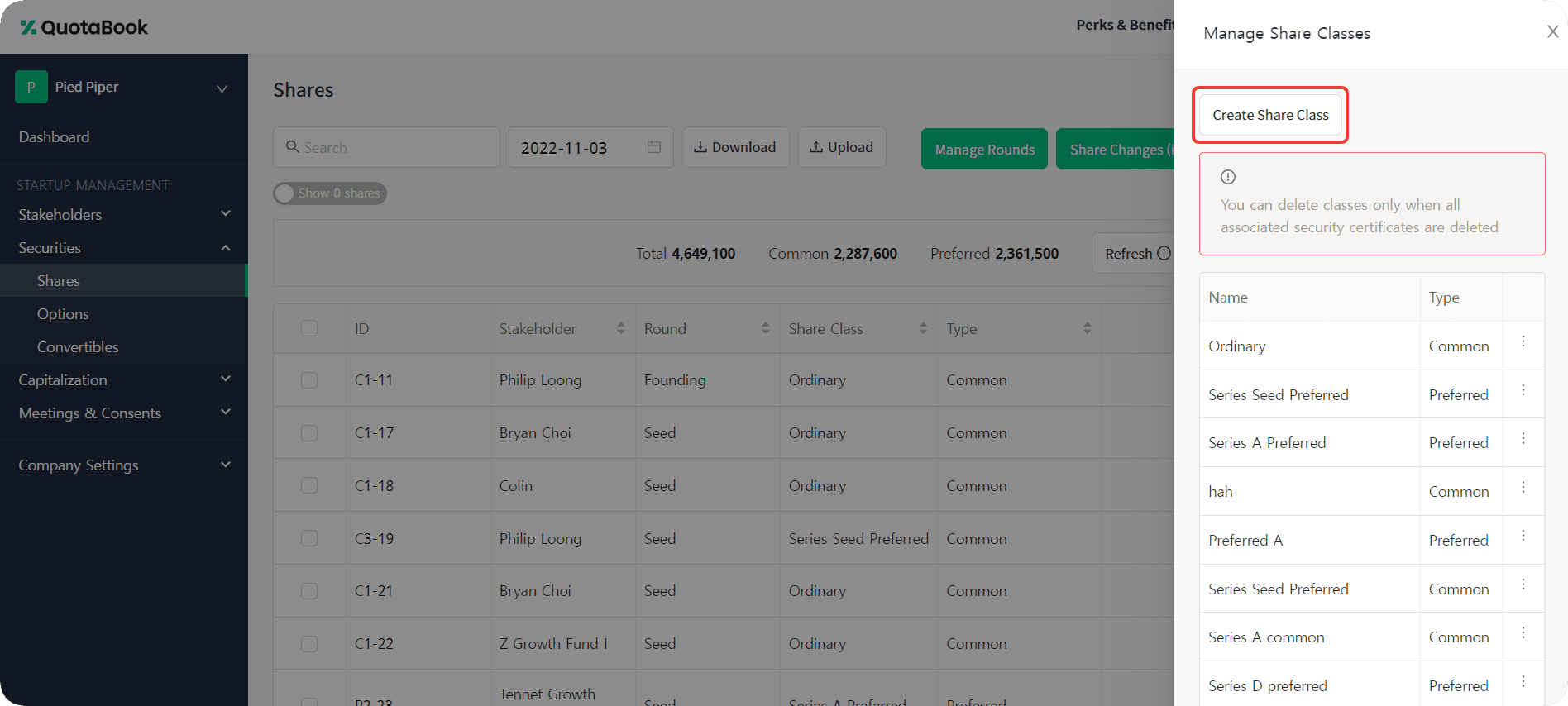
2. Enter the share class name and related documents.
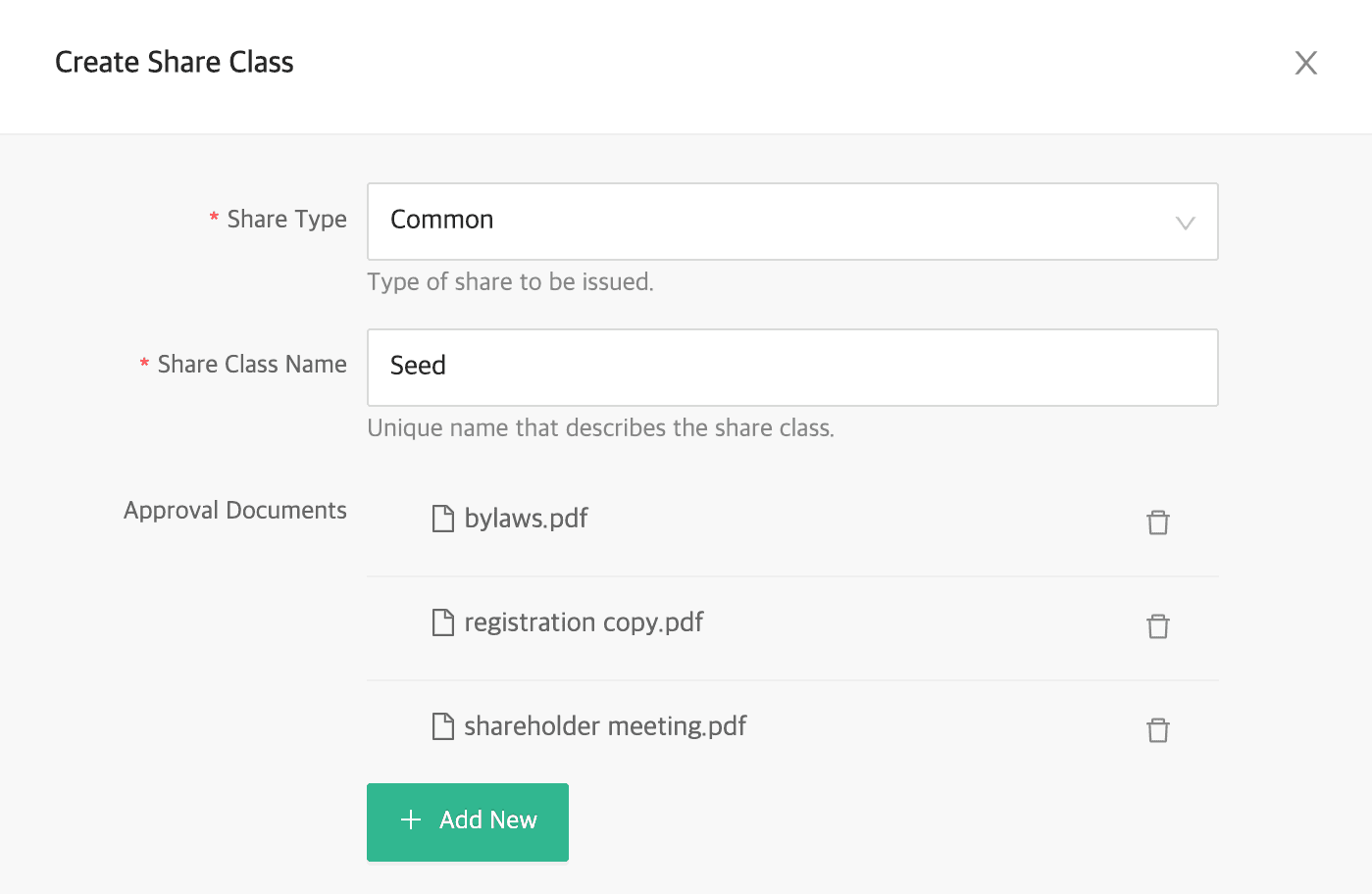
Select share type (common / preferred) and input share class names as shown on official documents (Common stocks, Series-A Preference Stock, etc.)
Attach relevant documents such s corporate charter, incorporation document or term sheets.
Adding Share Class Details for Preferred Shares
You can add detailed terms on liquidation preferences, conversion rights and redemption rights for preferred shares.
Seniority

Refers to the payout order among different share classes (higher number gets paid out first). Common shares with the lowest seniority are usually ranked as "1", while preferred shares that are paid out first upon liquidation hold ranks equal to or higher than "2".
Preferred shares with different share classes may be ranked the same, but this depends and needs to be checked with the specific liquidation preference terms of each preferred shares. The higher the number, the higher the liquidation preference rights.
Preference Multiple

The multiplier of the amount that preferred shares will receive before common shares. Mostly this multiple would be 1 (hence, the investment amount) or the compound interest added to the investment amount.
Participation Rights
Refers to Non-participating vs Full-participating preferred shares


Non-participating preferred shares are entitled to liquidation preference rights, but are not entitled for another payout when common shares holders are paid.
Full-participating preferred shares are entitle to liquidation preference rights and also for another payout when common shareholders are paid out.
Participation cap referes to the maximum amount of payout for full-participating preferred shares. If there is a cap, input the multiplier of the initial investment amount. If there is no cap, input "0".
Conversion Rights
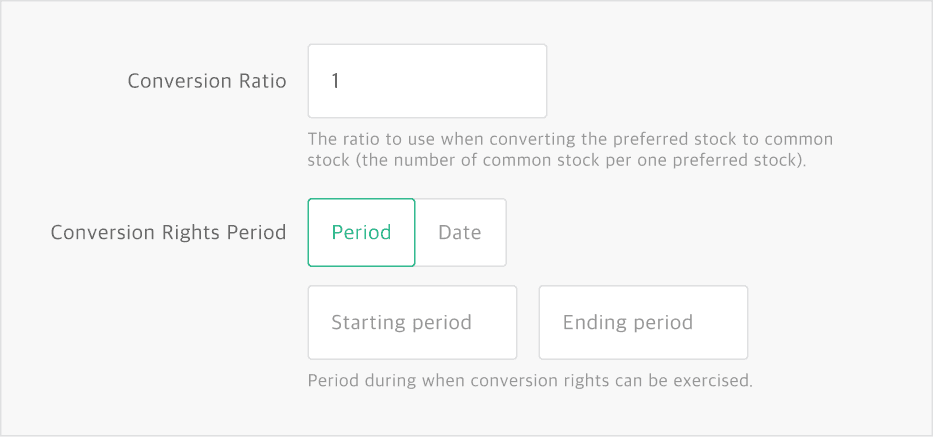
Conversion ratio: refers to the number of common shares converted from one preferred shares. Normally the ratio would be 1:1, but this may be up to change if shares were issued at a price lower than the price that the investor paid per share or any events that lead to refixing (conversion ratio change).
Conversion rights period/date: Starting date would normally be the date of share issuance or the day after, while the ending date is normally 10 years (120 months) from the starting date. You can either input the exact dates or select the period.
Redemption Rights
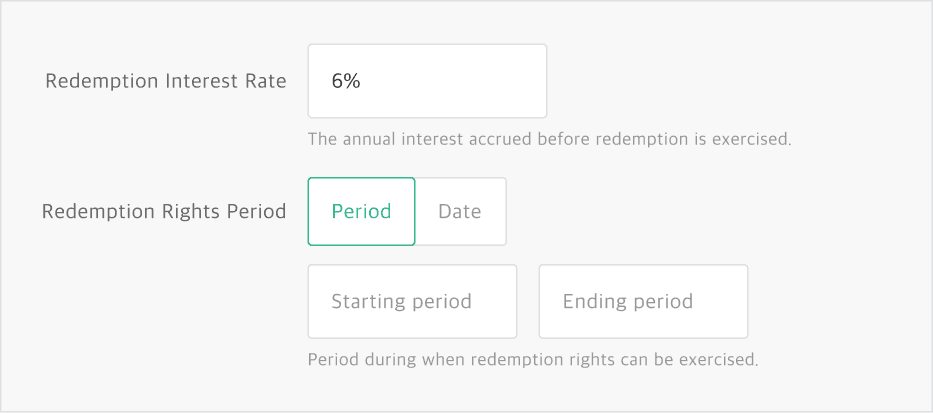
Redemption interest rate: input interest rate
Redemption rights period/date: Starting date would normally be after three to four years from investment. Ending date is normally the share's expiration date, which is 10 years from investment. You can either input the exact dates or select the period.
Read next
